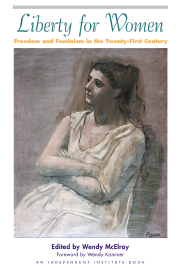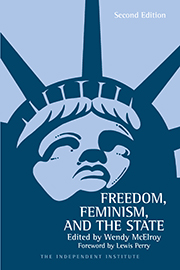Throughout most of intellectual history, society has been considered to be the result of someone’s design. In his multi-volume Law, Legislation, and Liberty, the social theorist F. A. Hayek referred to this position as “constructivist rationalism” and argued vigorously against it. In his 1974 Nobel Memorial Lecture, titled “The Pretence of Knowledge,” Hayek expressed a different view of how society developed:
The recognition of the insuperable limits to his knowledge ought indeed to teach the student of society a lesson in humility which should guard him against becoming an accomplice in men’s fatal striving to control society—a striving which makes him not only a tyrant over his fellows, but which may well make him the destroyer of a civilization which no brain has designed but which has grown from the free efforts of millions of individuals.
Hayek opposed any attempt to engineer—that is, centrally to plan and to coordinate—the structure of society. He believed that such engineering actually destroyed rather than created society, which was the result of human action but not of human design. Alongside the Austrian economist Ludwig von Mises, Hayek provided what are arguably the best critiques of the “constructivist” theories and policies that have grown in popularity during the twentieth century.
Both Hayek and Mises had witnessed the devastation of classical liberalism by two world wars, but most particularly by World War I. Wartime governments had clamped centralized control over the private sector to ensure a continuing flow of armaments and the other goods deemed necessary for victory. Governments had inflated their money supplies to pay for massive military buildups. And war had strangled the flow of free trade that classical liberals considered to be a prerequisite to peace, prosperity, and freedom. In short, both Hayek and Mises had watched twentieth-century statism replacing nineteenth-century classical liberalism.
If “war is the health of the state,” as the American individualist Randolph Bourne declared, then Hayek and Mises witnessed the impact of an obvious corollary: namely, that war is the death of individua liberty. And social engineering was a key mechanism through which that freedom was destroyed. Indeed, one of Mises’ earliest works, Nation, State, and Economy (1919), analyzed the disastrous consequences of the central planning ushered in by World War I.
But Hayek and Mises did not merely oppose social engineering on utilitarian grounds. Independently, they each evolved complex and sophisticated systems of social theory to explain how the institutions of society naturally evolved. They maintained that the institutions of a healthy society were the collective and unintended results of human action. Complex social phenomena—such as law, language, and money—were especially the unintended consequences of individual interactions. For example, no committee or central authority decided to invent human speech, let alone to design a language as complicated as English. Acting solely to achieve their own ends, individuals began making sounds to facilitate getting what they wanted from other people. Thus, speech was the result of human action but not of human design, and it naturally evolved into language. The evolution may not have proceeded with scientific efficiency, but it was efficient enough to permit the development of civilization. The efficiency of government programs suffers by comparison.
Yet constructivists argued that an unplanned society is wasteful and chaotic. With sufficient knowledge, they could engineer a perfectly efficient society. There would be no more surpluses or scarcities. Stock markets would not crash, and currencies would not fluctuate. Perhaps society could even be designed so that its members walked in unison toward desirable social goals, just as they had marched together toward victory in wartime.
Hayek bluntly stated that the knowledge constructivists sought was unattainable. It was not possible to plan the dynamics of tomorrow based on how people acted yesterday. People were unpredictable. Human beings were fundamentally different from the physical objects examined by the hard sciences. A scientist could learn everything he needed to know about the movement of an object, and his knowledge would not necessarily change over time. But human beings acted on psychological factors and motivations that were hidden, often even from themselves. Society did not consist of objects that could be neatly categorized and made to obey the laws of science. Society consisted of erratic and unpredictable individuals.
Mises made a similar point in regard to monetary theory. He demonstrated that even the seemingly objective tool of monetary calculation—the sort that people use informally to decide, say, whether to ask for a raise—is ineffective for broader social planning. At best, prices were a historical record; the price of bread is a past price, even if the past was very recent. This information could create anticipation of what the price of bread might be tomorrow, but it could predict nothing. A bread shortage might make the price sky-rocket. Moreover, using yesterday to engineer tomorrow went against a fundamental tenet of human action: the principle of inevitable change.
In Human Action: A Treatise on Economics (1949), Mises commented, “Human action originates change. As far as there is human action there is no stability, but ceaseless alteration. . . . The prices of the market are historical facts expressive of a state of affairs that prevailed at a definite instant of the irreversible historical process. . . . In the imaginary—and, of course, unrealizable—state of rigidity and stability there are no changes to be measured. In the actual world of permanent change there are no fixed points. . . .”
From Nation, State, and Economy through to his magnum opus, Human Action, Mises eloquently argued against the possibility of acquiring enough knowledge to engineer society. Equally, in Hayek’s work The Sensory Order: An Inquiry into the Foundations of Theoretical Psychology (1952, but apparently based on work he did in 1919 and 1920) to his far more popular The Road to Serfdom (1944), he integrated such diverse fields as epistemology and economics to form a social theory that denied any validity to central planning.
Throughout the work of these theorists, two closely related concepts emerge again and again: methodological individualism and spontaneous order. These concepts are key to understanding why Hayek and Mises so adamantly rejected social engineering.
Methodological Individualism
In Human Action, Mises offered a description of what he called “The Principle of Methodological Individualism”: “First we must realize that all actions are performed by individuals. . . . If we scrutinize the meaning of the various actions performed by individuals we must necessarily learn everything about the actions of collective wholes. For a social collective has no existence and reality outside of the individual members’ actions.”
Mises claimed that collective wholes—such as “the family” or “society”—were nothing more than the sum of the individual members who comprised them. Such wholes were abstractions useful for indicating the interaction of people in a specific context. “Family” indicates one set of interactions, “bridge club” another.
In reducing group functioning to its most basic element—the acts of individuals—Mises did not deny the importance of collective wholes. Quite the contrary. Mises explained, “Methodological individualism, far from contesting the significance of such collective wholes, considers it as one of its main tasks to describe and to analyze their becoming and their disappearing, their changing structures, and their operation. And it chooses the only method fitted to solve this problem satisfactorily.”
In other words, methodological individualism was a powerful analytical tool that could be used to discover the principles on which a group of people interacted. It was the best method by which to understand society.
Mises’ stress upon methodological individualism did not arise in a vacuum but rather in response to the theory of social holism that had become popular in the early twentieth century. Social holists claimed that collective wholes had an existence far greater than the sum of their individual parts. They drew parallels between the fields of biology and sociology. They argued that just as higher level principles of explanation were needed to describe a complex biological organism than were used to explain the molecules that comprise it, so too with human society. New principles and characteristics emerged within a society that were entirely different from those that applied to individuals. In other words, there were rules that applied only to collective wholes and not to individual members. Further, these emergent rules functioned along scientific lines and responded to methods of planning.
The Individual as Abstraction
With the rise of Marxism, those who favored methodological individualism were often accused of “atomism” or reductionism. Marxists went so far as to assert that it was the individual, and not society, that was the true abstraction. In its extreme form, these social holists even denied that the individual existed without society. As Mises observed, “The notion of an individual, say the critics, is an empty abstraction. Real man is necessarily always a member of a social whole.”
Karl Marx argued this point by using a sort of Robinson Crusoe example. Marx contended that an individual who grew up in isolation on a desert island would not be a human being. The crux of his argument was that human beings are social organisms—social constructs, if you will—who cannot be lifted from their defining context and remain human beings. The adult Robinson Crusoe was clearly a human being, but his humanity resulted from a prior history of socialization. Language, thought, art—all that made Crusoe human had resulted from his life in community. Reversing Misesian logic, Marx claimed that the collective whole called “society” created its individual members, who could be understood only by examining the rules of that society. Marx went an extra step and tried to extend the principles and methodology of the hard sciences—such as predictability and control—to society.
Classical liberals countered that a person who had been raised in utter isolation would still be a human being. For example, he would have a scale of preferences and would act to achieve the highest one first. True, without social interaction, major potentialities within the person’s humanity would never develop or be expressed. For example, there would be no reason to develop language skills and no possibility of becoming a parent. Were the isolated individual to be rescued and placed within society, however, his unexpressed potentials might well emerge. But whatever characteristics developed would emerge from his own inherent potential as a human being and they would be the result of the individual interactions he experienced. The characteristics would not emerge because a collective whole called “society” defined them into existence.
Classical liberals did not dispute the claim that groups had a cumulative dynamic that was different than the dynamic of man in isolation. After all, only in society did intellectual and economic exchanges arise. But they believed that the differences could be explained by breaking the group dynamic down into the intricate interactions of the individuals who comprised it. For example, everything about a conversation could be broken down into the statements, body language, and othe actions of the individuals involved. Nothing about the conversation required further principles of explanation.
This methodological approach worked in analyzing even extremely complex collective wholes such as “the state.” Everything the state did or was could be reduced to individual actions. As Mises explained, “The hangman, not the state, executes a criminal. It is the meaning of those concerned that discerns in the hangman’s action an action of the state.” Individuals who look at the hangman see the state in action only because an abstraction known as “the state” provides a context for his action. Equally, people never truly see or hear a group conversation. All they see or hear are individuals speaking, and we label the sum of their exchange a “group conversation.”
Methodological individualism had profound implications for social-engineering theory. If collective wholes were a “mental process” within individuals rather than concrete entities with independent existence, then it made no sense to claim there were unique rules and characteristics that applied to collectives and not to individuals. Methodological individualism removed the collective wholes from an objective realm ruled by scientific principles and returned it to the subjective realm of human judgment and preference. Instead of being able to design social institutions, such as banks, to run along scientific principles, social engineers were reduced to regulating individuals. They were engaged in planning how human beings would express their preferences in the future—a knowledge that individuals themselves rarely possessed.
And yet, a question remains. Without planning, how can society improve? Part of the answer is to be found in the second concept running throughout the work of Hayek and Mises.
Spontaneous Order
During the eighteenth century, theorists like Adam Smith began to examine the impact that the unintended consequences of human action had upon society. These were the collective consequences that accrued as a result of people pursuing their own individual interests. For example, if twenty people walked the shortest distance across a field, a crude path through the field would be established. But forging the path would be an unintended consequence of each person’s consciousgoal—to reach the other side quickly.
Smith came to believe that society and its institutions could be best understood by reference to such unintended consequences. Consider the price of yesterday’s bread. No one legislated what you were willing to pay for bread yesterday. That price resulted from such unpredictable factors as how highly you prized bread twenty-four hours ago. The social institution of price, therefore, had been established spontaneously. It was also self-correcting; that is, the price spontaneously and rapidly fluctuated to reflect changing factors, such as the availability of bread. And because such changes were unpredictable, only a spontaneous response—not a preplanned one—could adequately respond.
No contemporary writer has explored the idea of spontaneous and self-correcting social institutions in greater depth than Hayek. In his essay “Principles of a Liberal Social Order,” Hayek tackled an objection he often encountered. He wrote, “Much of the opposition to a system of freedom under general laws arises from the inability to conceive of an effective co-ordination of human activities without deliberate organization by a commanding intelligence” (Studies in Philosophy, Politics and Society, 1960).
For social holists, “order” and “efficiency” were concepts that seemed to be wedded together. Mises and Hayek agreed, but they used a different definition of “order.” For social holists, the word seemed to conjure up quasi-military visions of society marching shoulder to shoulder toward a common goal. It was embodied in five-year plans that reduced the functioning of society to mathematical equations. By contrast, the order espoused by Mises and Hayek was a spontaneous one in which individuals pursued their own diverse interests without coordination by a central authority.
What does such an order look like? A classic example is the New York Stock Exchange, which was created as a location at which stocks could be bought and sold Monday to Friday from 9 a.m. to 4 p.m. No overriding authority set prices, volume limits, etc. These were established by pockets of people who pursued their own preferences in a manner resembling chaos. In yelling out on the floor that he was willing to buy ABC stock at X price, a trader intended to pursue nothing more than the preferences of his client. But an unintended consequence of his action was the establishment of an overall price for ABC stock.
Spontaneous order can resemble chaos. In Hayek’s words, it is the sort of order “whose justification in the particular instant may not be recognizable, and which will . . . often appear unintelligible and irrational.” (“Individualism True and False” in Individualism and Economic Order, 1948) Ironically, this resemblance to chaos may indicate an aspect of why spontaneous order is efficient. After all, the shifting circumstances to which this sort of order responds have no logical or predictable order. Just as the trading floor of a stock exchange cannot be run according to Miss Manners’ rules of etiquette, so too does a dynamic society require institutions with fluidity.
Indeed, the main advantage of a decentralized system of decision-making may well be its ability to adjust constantly and quickly to shifting circumstances. Where social engineering demands a stable future and a godlike knowledge of the present, spontaneous order recognizes and embodies the inevitability of change and the inadequacy of human knowledge.
An individual knows as much as it is possible to know about his own preferences and future acts. The further you move away from the individual, the less reliable the data become—and the less perfect the consequences of decision-making.
Diverging from a Common Point
There is a sense in which both Hayek and Mises based their arguments for individual liberty on human ignorance. In The Constitution of Liberty (1960), Hayek acknowledges that the need for freedom “rests chiefly on the recognition of the inevitable ignorance of all of us concerning a great many of the factors on which the achievement of our ends and welfare depends.” Ironically, constructivists make much the same argument for their position: human beings are not naturally perfect, therefore society must be engineered and designed. From a point of common agreement—namely, the inadequacy of human knowledge—the two sides reach diametrically opposed conclusions.









